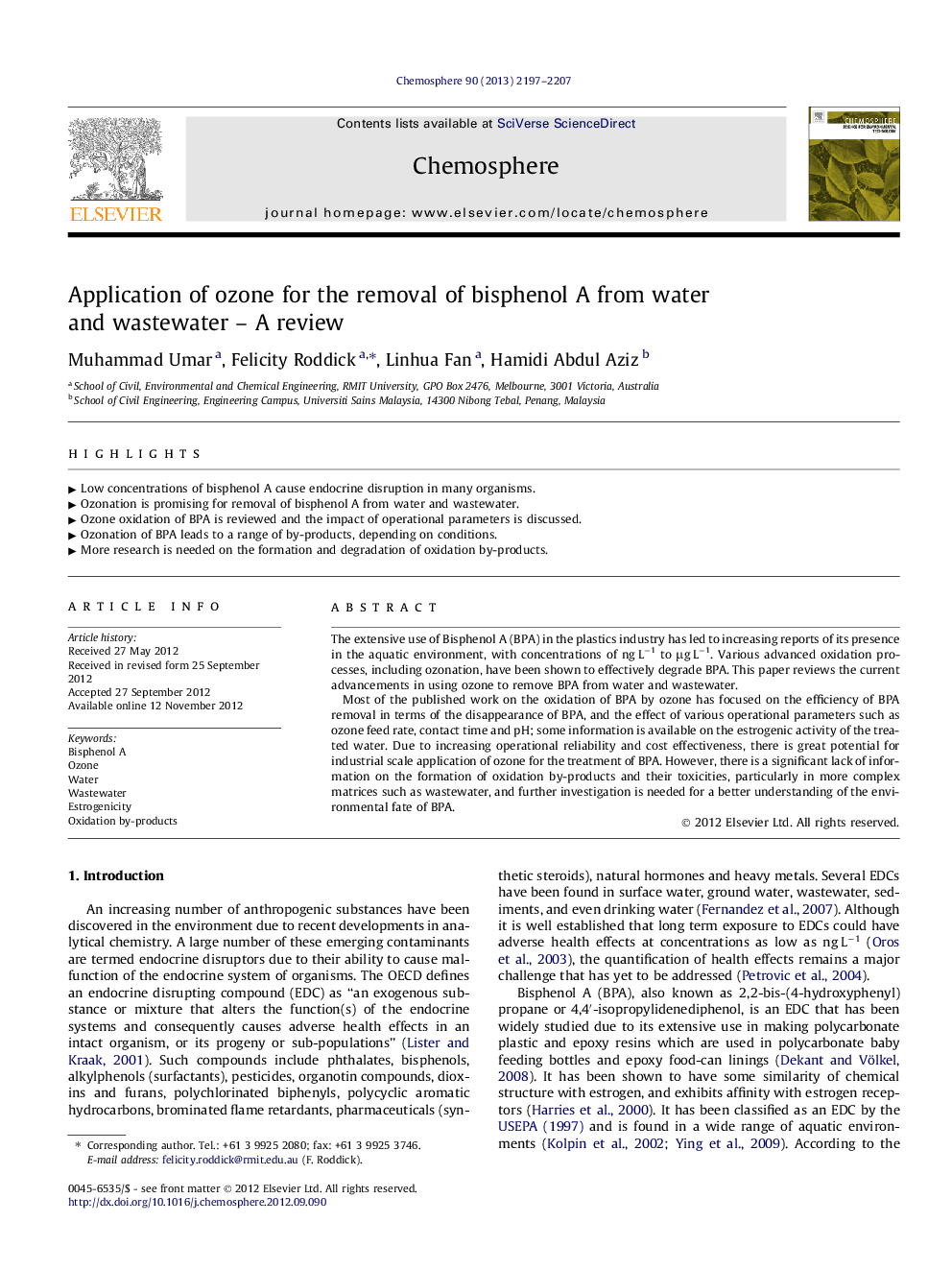| Article ID | Journal | Published Year | Pages | File Type |
|---|---|---|---|---|
| 4409672 | Chemosphere | 2013 | 11 Pages |
The extensive use of Bisphenol A (BPA) in the plastics industry has led to increasing reports of its presence in the aquatic environment, with concentrations of ng L−1 to μg L−1. Various advanced oxidation processes, including ozonation, have been shown to effectively degrade BPA. This paper reviews the current advancements in using ozone to remove BPA from water and wastewater.Most of the published work on the oxidation of BPA by ozone has focused on the efficiency of BPA removal in terms of the disappearance of BPA, and the effect of various operational parameters such as ozone feed rate, contact time and pH; some information is available on the estrogenic activity of the treated water. Due to increasing operational reliability and cost effectiveness, there is great potential for industrial scale application of ozone for the treatment of BPA. However, there is a significant lack of information on the formation of oxidation by-products and their toxicities, particularly in more complex matrices such as wastewater, and further investigation is needed for a better understanding of the environmental fate of BPA.
► Low concentrations of bisphenol A cause endocrine disruption in many organisms. ► Ozonation is promising for removal of bisphenol A from water and wastewater. ► Ozone oxidation of BPA is reviewed and the impact of operational parameters is discussed. ► Ozonation of BPA leads to a range of by-products, depending on conditions. ► More research is needed on the formation and degradation of oxidation by-products.
